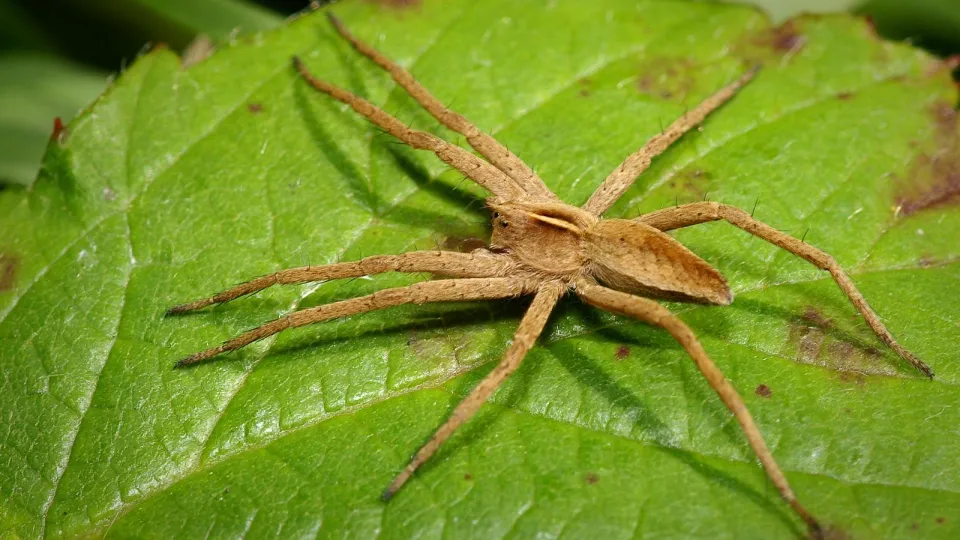
Nursery web spider
A common spider of heathland and grassland, the Nursery web spider has brown and black stripes running the length of its body. It is an active hunter, only using its silk to create a protective tent for its young.
A taxon is Not Evaluated when it is has not yet been evaluated against the criteria

A common spider of heathland and grassland, the Nursery web spider has brown and black stripes running the length of its body. It is an active hunter, only using its silk to create a protective tent for its young.
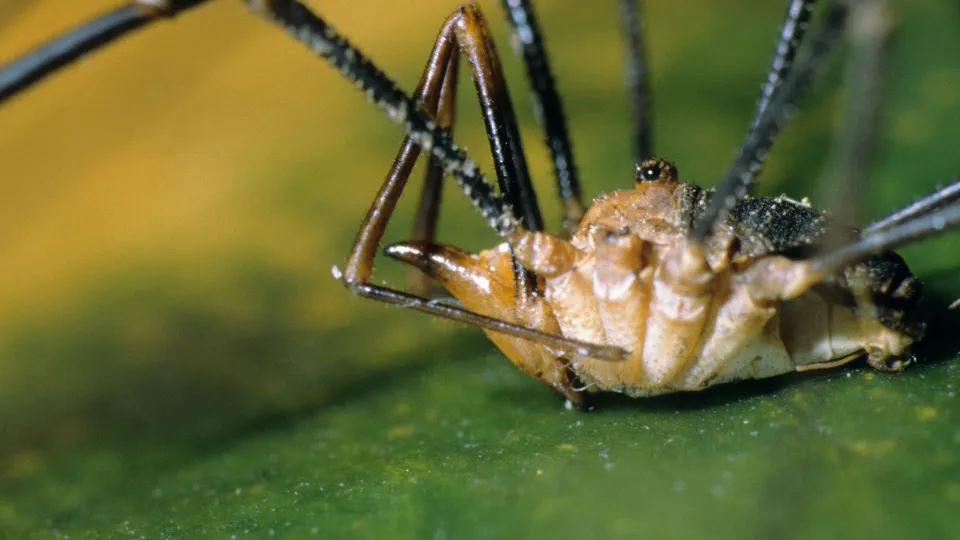
The Common harvestman is familiar to us as the large, spindly spider-like creature that frequents gardens and houses. It predates on smaller invertebrates which it catches using hooks on the ends of its legs.
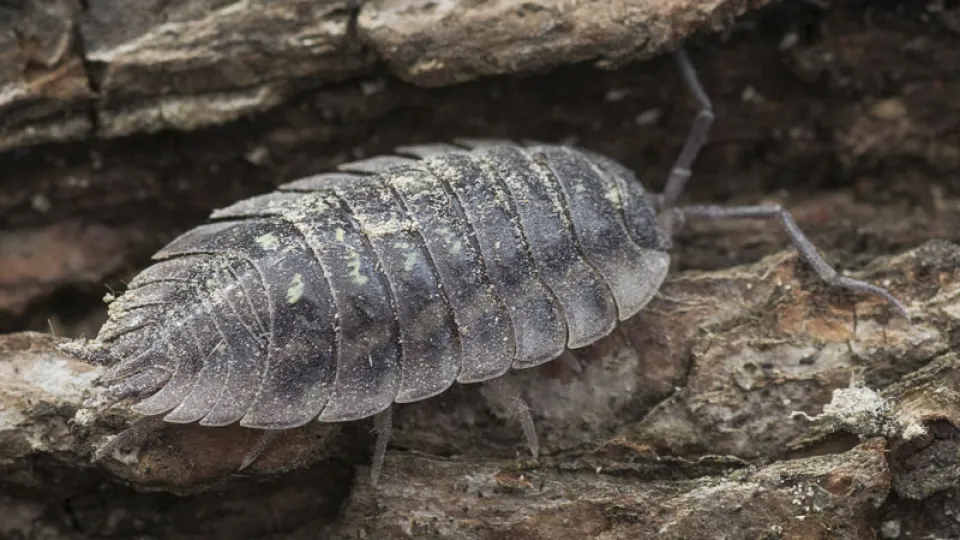
If you were to pick up a rock in the garden, you’d hopefully find a few common woodlouse. These hardy minibeasts have in-built armour and like to hide in warm, moist places like compost heaps.
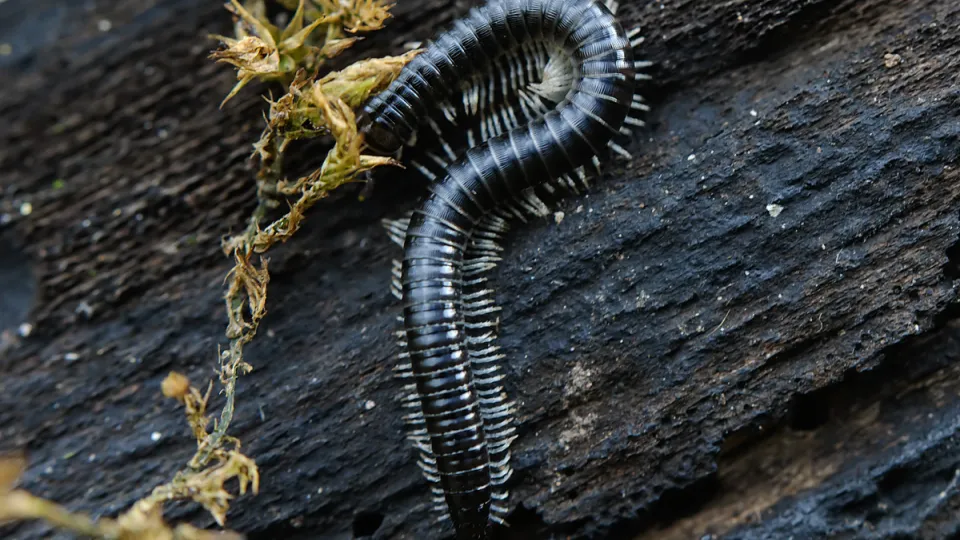
Found in compost heaps and under stones in gardens, the White-legged snake millipede is a common minibeast. Despite its name, it has about 100 legs. It is an important recycler of nutrients, feeding on decaying matter.
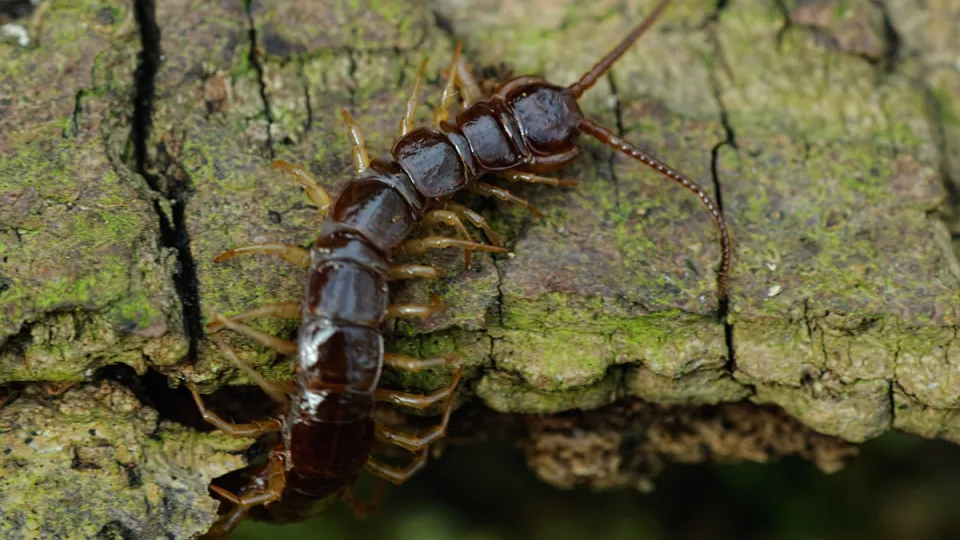
A regular in gardens, hunting around compost heaps and under stones, the brown centipede is a common minibeast. Despite its name, it has 15 pairs of legs - one on each segment of its body.
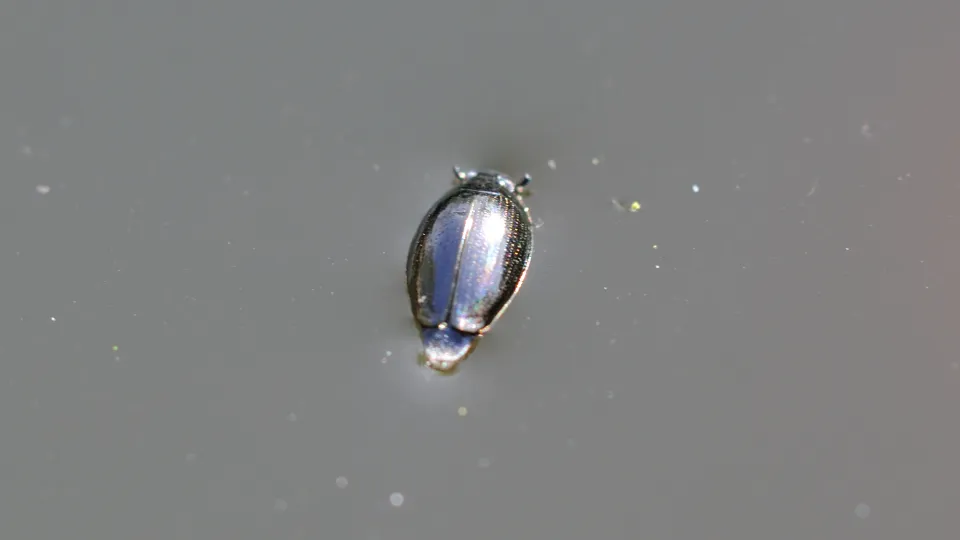
Ever wondered what that little black dot whirling in circles on the top of the water of a pond is? Those are whirligig beetles! Often seen shooting across the water surface on the hunt for its next meal.
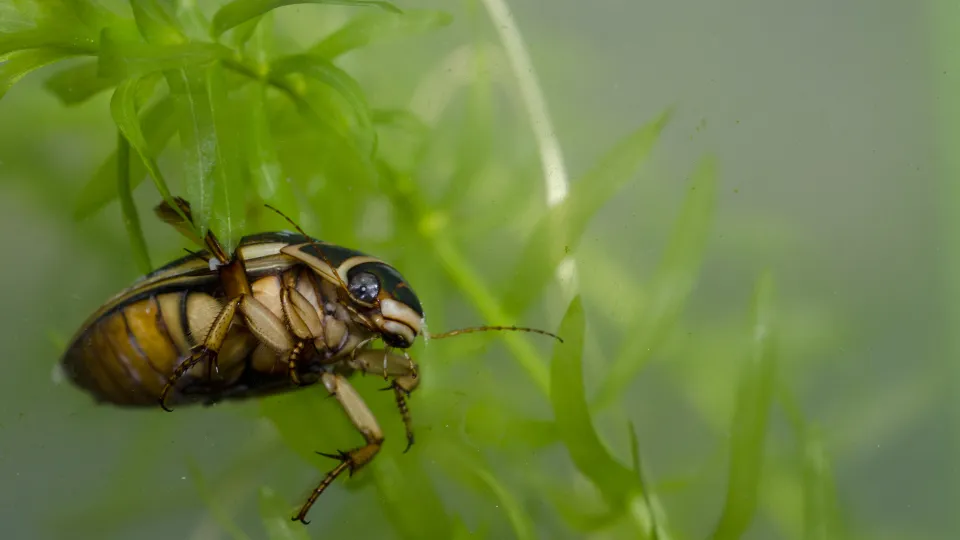
The Great diving beetle is a large and voracious predator of ponds and slow-moving waterways. Blackish-green in colour, it can be spotted coming to the surface to replenish the air supply it stores beneath its wing cases.
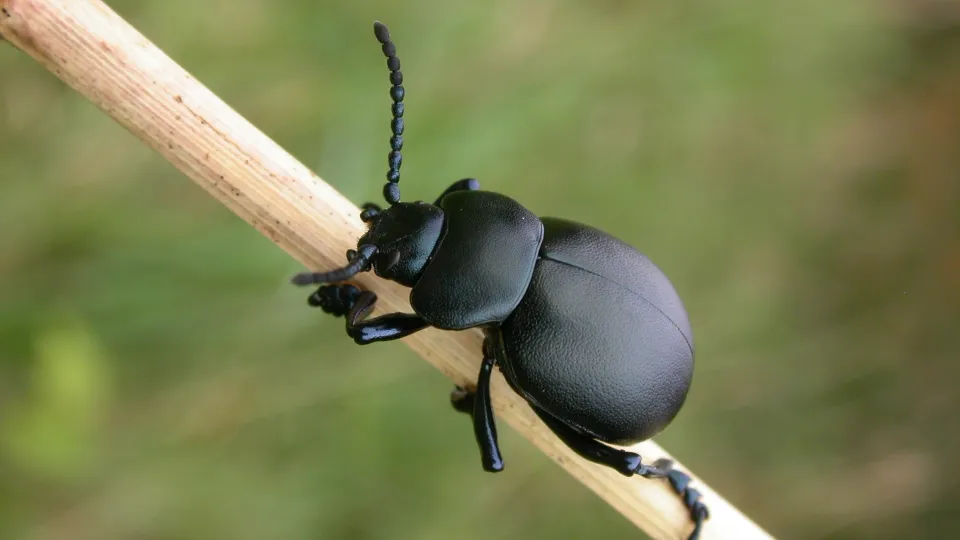
The common name of the Bloody-nosed beetle derives from its unusual defence mechanism: when threatened, it secretes a distasteful blood-red liquid from its mouth. This flightless beetle can be found on grassland and heathland, and along hedgerows.
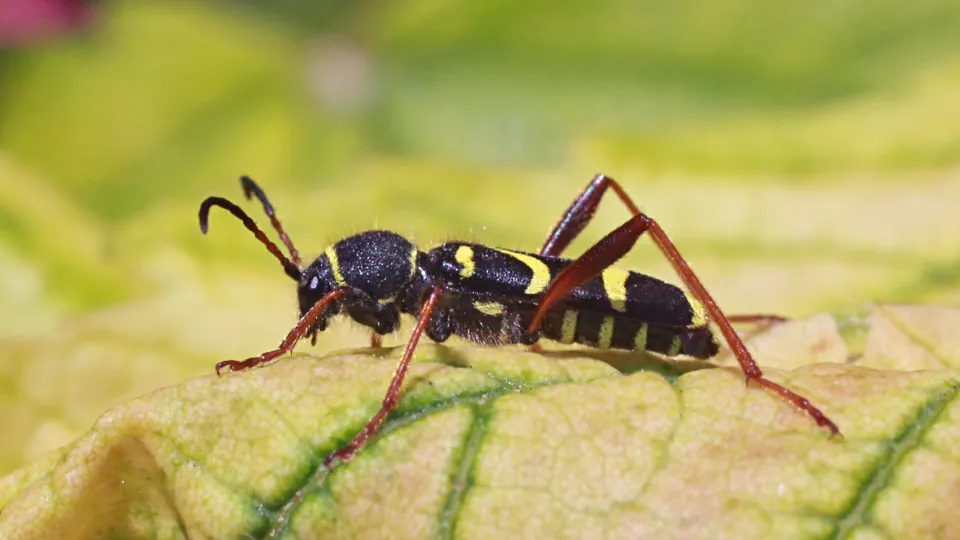
A clever mimic, the wasp beetle is black-and-yellow and moves in a jerky, flight-like fashion - fooling predators into thinking it is actually a more harmful common wasp. Look for it in hedgerows and woods in summer.
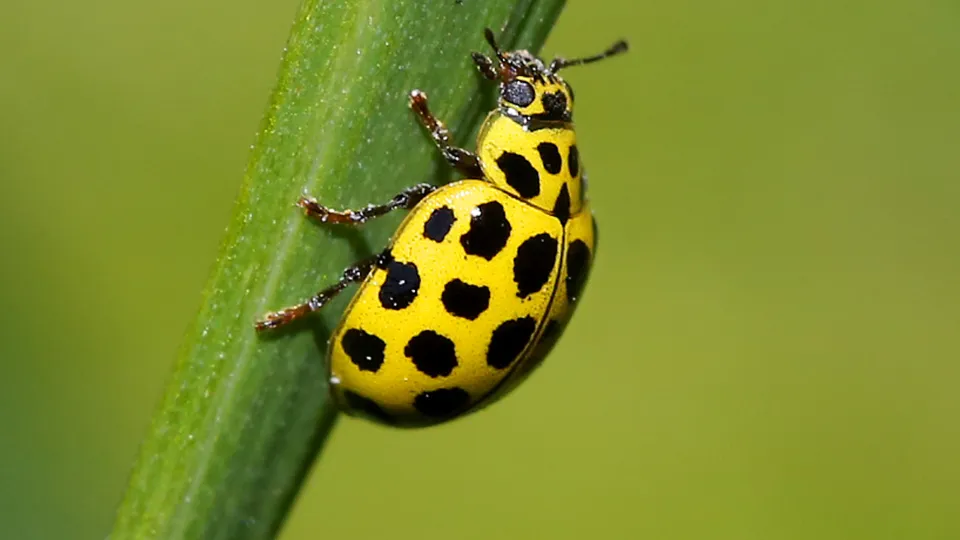
The 22-spot ladybird is one of three yellow ladybirds in the UK. Look for it in grassland, woodland and gardens. Ladybirds are beneficial insects, managing garden pests - encourage them by putting up a bug box.